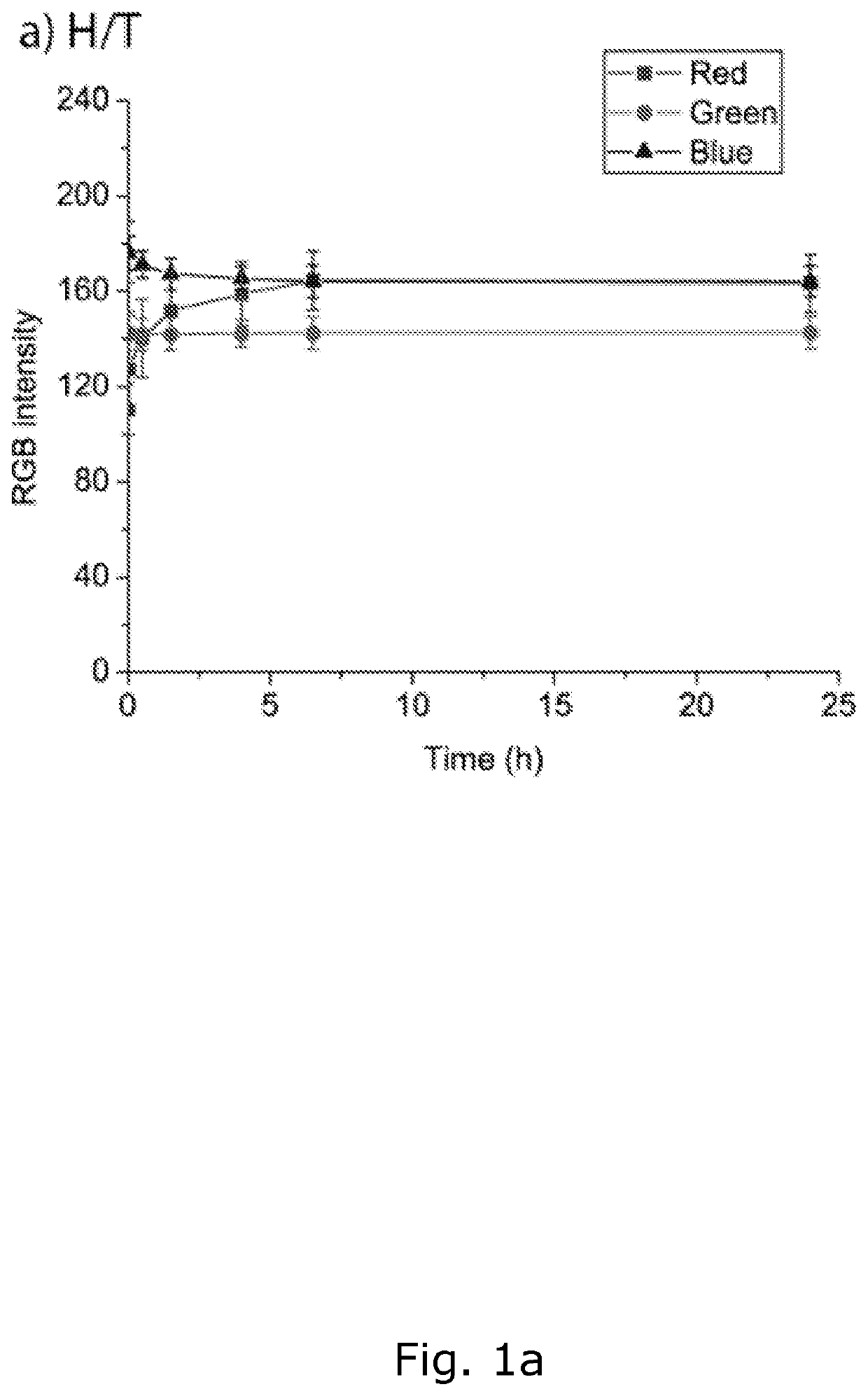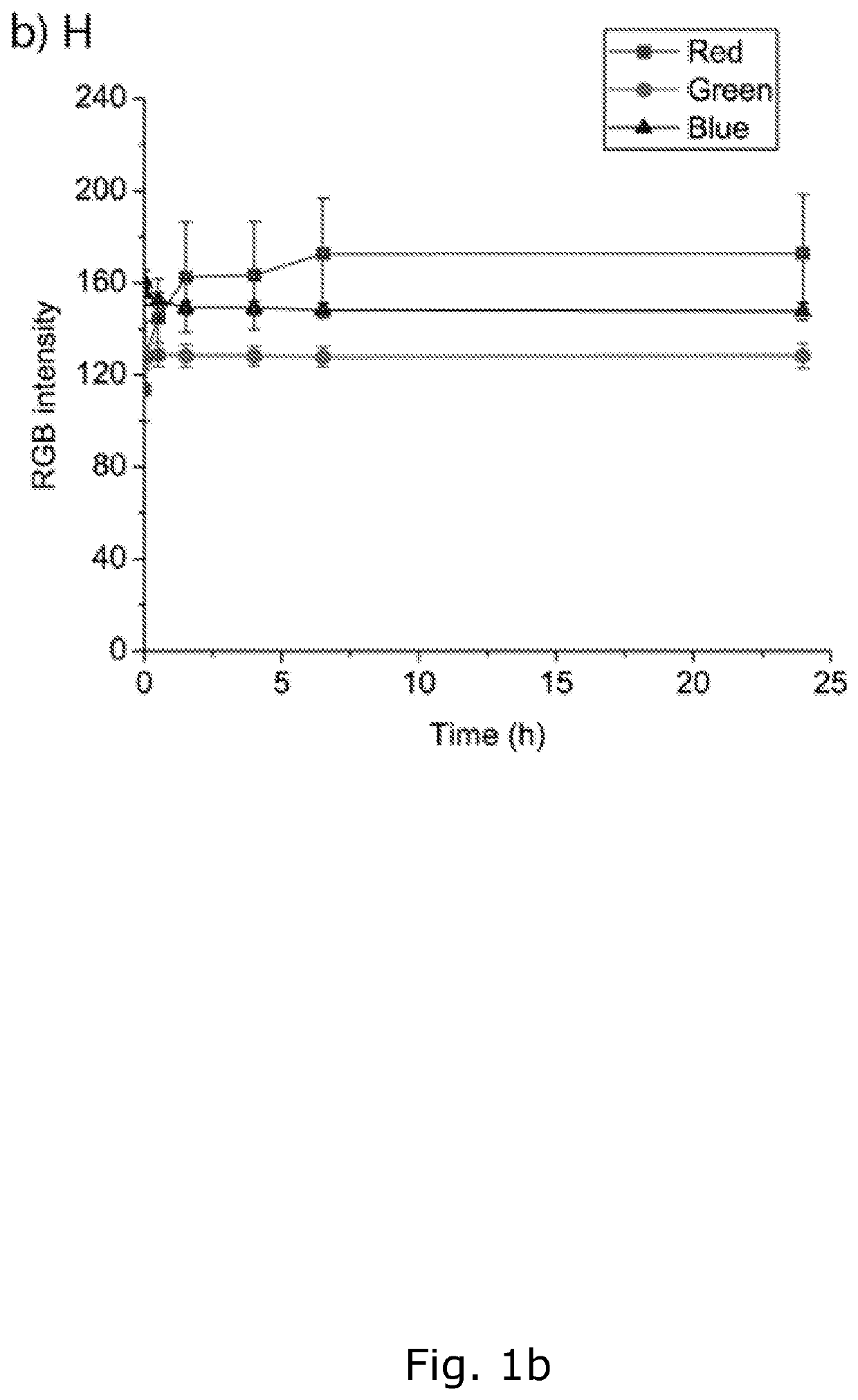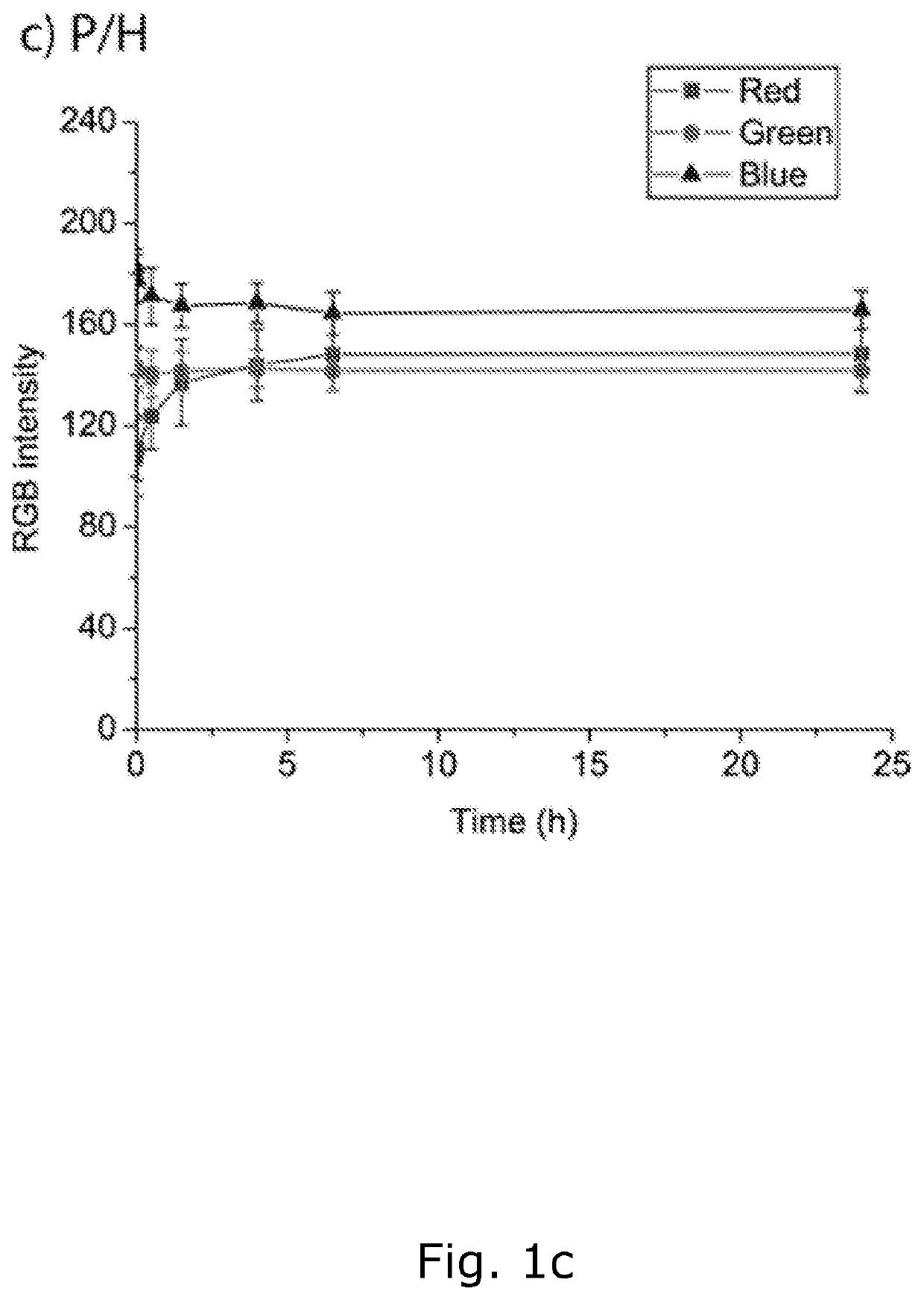Poly(diacetylene) sensor arrays for characterizing aqueous solutions
a technology of colorimetric polydiacetylene and sensor array, which is applied in the direction of material testing goods, testing food, instruments, etc., can solve the problems of unexplored development and process monitoring, and the use of food and beverage safety in the context of food and beverage safety, and achieve fast, cheap and reliable on-site characterization and rapid differentiation
- Summary
- Abstract
- Description
- Claims
- Application Information
AI Technical Summary
Benefits of technology
Problems solved by technology
Method used
Image
Examples
example 1
ability when Exposed to Ambient Environment
[0206]Paper-based PDA sensors were fabricated from 1 mM H, P and T as well as their mixtures (H / T, P / H, and T / P, all 1:1 vol-ratio). With the aim to characterize the stability of the paper-based PDA sensors i.e., their tendency to change colour in the absence of any specific stimuli, they were exposed to the environment between 2 and 1440 min and the RGB changes were compared to the sensor at time zero. The scanned images of the sensor arrays visually showed a red colour shift for all H containing sensors, while the others preserved their original blue colour.
[0207]The specific RGB intensity plots confirmed this observation (FIGS. 1a-f). These plots also illustrated that the H-containing sensors stabilized after about 7 h. Therefore, for all the subsequent experiments, the paper-based PDA sensors were used about 12 h after fabrication.
example 2
ater-Ethanol Mixtures: Da Monomer Ratios
[0208]The first step towards the use of the paper-based PDA sensor in the context of alcoholic beverages, the effect of ethanol (EtOH) in water on the RGB colour change has to be considered.
[0209]Different paper-based PDA sensors were fabricated from 1 mM H, P and T as well as their mixtures (H / T, P / H, and T / P, 3:1, 1:1 and 1:3 vol-ratio). The RGB colour change of these arrays before and after exposure to 100% EtOH, 10% EtOH and 100% ultrapure water (H2O) was assessed. The scanned images of the sensors showed a strong red colour shift for 100% EtOH in all cases. Further, only H containing sensors exhibited a visible colour change upon exposure to 10% EtOH and 100% H2O. The specific RGB intensity plots confirmed that 100% EtOH led to the largest changes in red and blue for all tested sensors while changes in H containing sensors were dominant for exposure to 10% EtOH and 100% H2O (FIGS. 2a-c).
[0210]A statistical multivariate analysis was requir...
example 3
ater-Ethanol Mixtures: Da Monomer Concentrations
[0211]Following on, to further improve the sensitivity and selectivity of sensor arrays assembled from T and P, the DA concentration used for their fabrication was stepwise lowered from 100 mM to 10 mM. We hypothesize that lower amounts of PDA on the paper might exhibit a more sensitive response upon exposure to different solutions. Since the response from sensors consisting (partly) of H showed visible blue-to-red colour shifts when 100 mM DAs were used during the fabrication, no lower concentrations were tested for this component.
[0212]Scanned images of sensor arrays fabricated from different concentrations of T, T / P (1:1 vol-ratio) and P before and after exposure to 100% EtOH, 10% EtOH and 100% H2O revealed a visual blue-to-red shift which varied for different DA concentrations. The specific RGB intensity plots supported this qualitative assessment (FIGS. 3a-c). Specifically, while P sensors seemed to provide the same response indep...
PUM
| Property | Measurement | Unit |
|---|---|---|
| wavelengths | aaaaa | aaaaa |
| wavelengths | aaaaa | aaaaa |
| colorimetric response | aaaaa | aaaaa |
Abstract
Description
Claims
Application Information
 Login to View More
Login to View More - R&D
- Intellectual Property
- Life Sciences
- Materials
- Tech Scout
- Unparalleled Data Quality
- Higher Quality Content
- 60% Fewer Hallucinations
Browse by: Latest US Patents, China's latest patents, Technical Efficacy Thesaurus, Application Domain, Technology Topic, Popular Technical Reports.
© 2025 PatSnap. All rights reserved.Legal|Privacy policy|Modern Slavery Act Transparency Statement|Sitemap|About US| Contact US: help@patsnap.com



